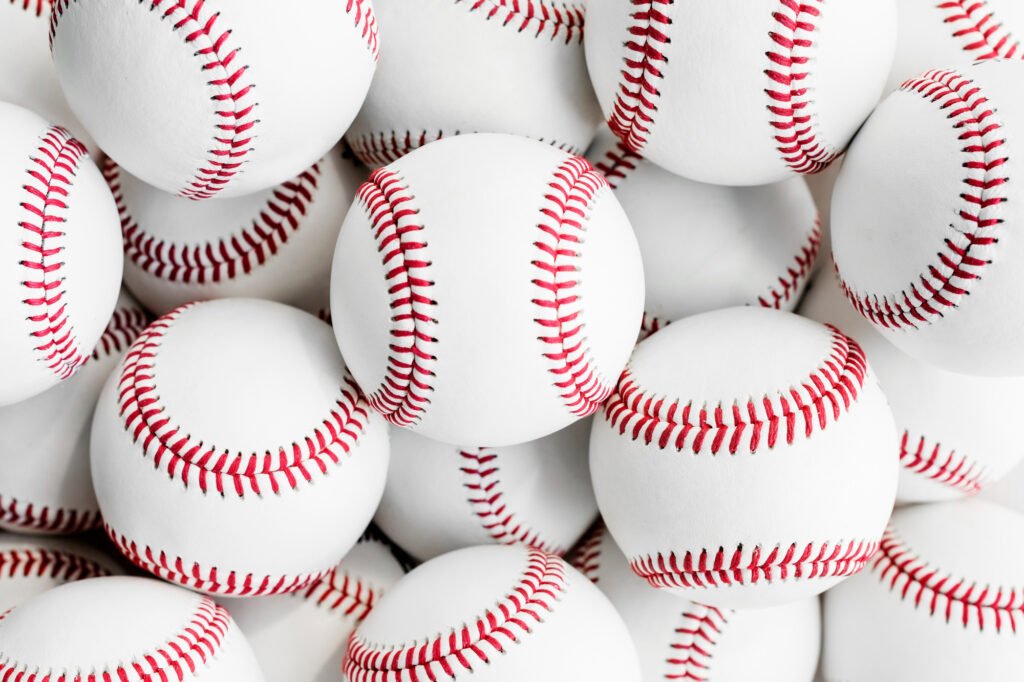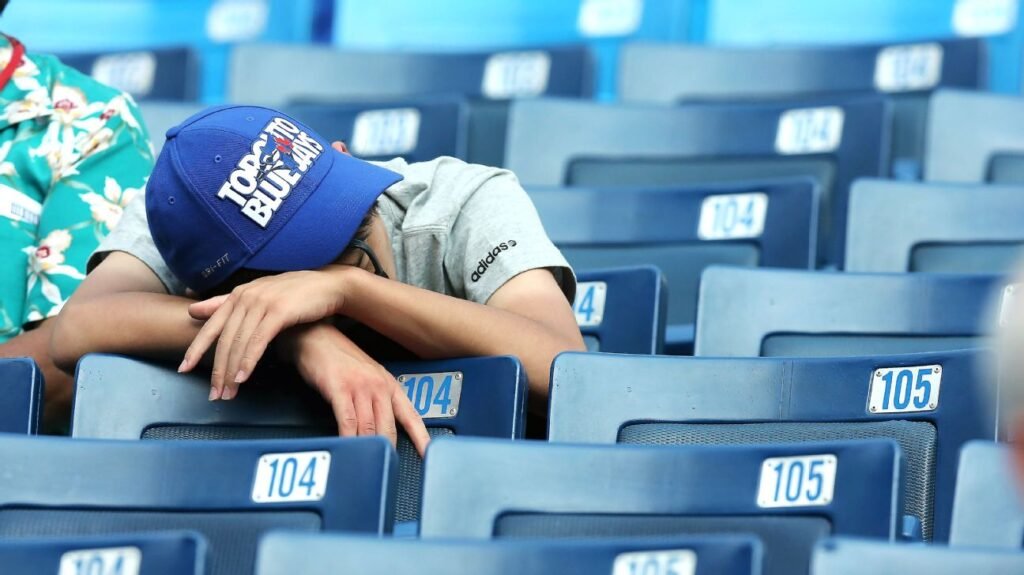As die-hard fans of America’s favorite pastime, we’ve heard this question countless times, Why Is Baseball Better Than Soccer? and the answer is simple: baseball is more than just a sport, it’s a way of life. it’s no secret that we believe baseball is the superior sport when compared to soccer.
From the crack of the bat to the smell of freshly cut grass, there’s something inherently romantic about the game that captures the hearts of fans around the world. While soccer certainly has its own merits, it simply can’t compare to the rich history and tradition of baseball.
The strategy behind each pitch, the excitement of a stolen base, and the thrill of a game-winning home run are just a few of the reasons why baseball reigns supreme. And let’s not forget about the legendary ballparks, iconic moments, and unforgettable players that have shaped the game over the years.
So if you’re still wondering why baseball is better than soccer, sit back, relax, and let me take you on a journey through the beloved game that has captured our hearts for generations.
Why Is Baseball Better Than Soccer?
Baseball and soccer are two of the most popular sports in the world, but when it comes down to it, there are several reasons why baseball is better than soccer.
Firstly, baseball is a more strategic game, with each pitch and play carefully planned and executed to gain an advantage over the opponent. Soccer, on the other hand, can often rely on quick reactions and physical prowess to score a goal.
Baseball has a rich history and tradition, with iconic players, legendary moments, and beloved ballparks that have become a part of the sport’s identity. Soccer may have its own traditions, but they can’t compare to the storied past of baseball.
The unique traditions of baseball, such as the seventh-inning stretch and the singing of “Take Me Out to the Ballgame,” add an element of fun and community to the game that soccer simply can’t match. All of these factors and more contribute to why baseball is truly the superior sport when compared to soccer.
There are countless reasons why baseball is better than soccer. Some of them are described below.
Strategic gameplay
One of the main reasons why is baseball better than soccer is due to its highly strategic gameplay. In baseball, each pitch and play is carefully planned and executed to gain an advantage over the opposing team.
The game is a battle of wits and skill, requiring players to think quickly on their feet and make split-second decisions. In contrast, soccer can often rely on quick reactions and physical prowess to score a goal, with less emphasis placed on strategic planning and execution.
In baseball, the pitcher must carefully choose which pitch to throw based on the batter’s strengths and weaknesses, as well as the current game situation. The catcher plays a crucial role in this strategy as well, setting up the defense and calling for specific pitches.
This level of strategic planning and execution simply isn’t present in soccer, where a goal can often be scored through a combination of luck and physical skill. Overall, the highly strategic nature of baseball is what sets it apart from soccer and makes it a superior sport.
Unique Equipment
Baseball has a variety of unique equipment, from the pitcher’s glove to the catcher’s mask, that add to the sport’s charm and character. Each piece of equipment serves a specific purpose and adds to the strategy of the game.
The pitcher’s glove, for example, is designed to give the pitcher a better grip on the ball, while the catcher’s mask protects the player from foul tips and wild pitches. The bat, too, is an essential piece of equipment, with players selecting bats based on their weight, length, and feel.
The variety of equipment in baseball adds to the sport’s depth and complexity, making it a game that requires skill, strategy, and precision. In contrast, soccer equipment is relatively straightforward, with players primarily relying on their shoes and shin guards. Baseball’s unique equipment is yet another aspect that sets it apart from soccer and makes it a superior sport.
Rich history and tradition
Baseball has a long and storied history that spans over a century, with iconic moments and legendary players etched into its lore. From the early days of Babe Ruth and Lou Gehrig to the modern era of Mike Trout and Clayton Kershaw, baseball has captured the hearts of fans across generations.
Baseball’s history is deeply ingrained in American culture, and the sport has played a significant role in shaping the country’s identity. The game’s origin can be traced back to the 19th century, with the first official game played in 1846. Since then, the sport has gone through countless changes and transformations, with each era adding to its rich history and legacy.
In contrast, soccer’s history is relatively new in the United States, with the sport only recently gaining popularity in the country. While soccer has a long and fascinating history on a global scale, its impact in America has been limited compared to baseball.
No ties
In soccer, a match can often end in a tie, leaving fans and players with a sense of dissatisfaction and ambiguity. A tie can also be frustrating for players who have given their all on the field, only to come away without a clear result.
Baseball, on the other hand, does not have ties. A game must continue until one team emerges victorious, which adds to the sport’s excitement and intensity. This also means that each game has a clear winner, and fans can leave the stadium knowing that their team either won or lost, rather than ending in a stalemate.
Length of the season
Baseball seasons last from March to October, spanning 162 games for each team. This extended season provides fans with more opportunities to watch their favorite teams and players compete.
The length of the baseball season also allows for more time to develop rivalries and storylines throughout the season. With so many games to play, each team has the chance to prove themselves and compete for a spot in the playoffs. This leads to intense competition and heightened excitement as the season progresses.
Furthermore, the length of the baseball season allows for players to showcase their skills and improve over time. This extended period of play also means that a team’s success is determined by more than just a few games, providing a more accurate representation of a team’s overall performance.
Community spirit
Baseball teams are often closely tied to their local communities, with players regularly engaging with fans and participating in community events. This creates a sense of unity and pride among fans, who feel a deep connection to their team and the sport.
Baseball games provide a unique opportunity for fans to come together and bond over their shared love of the sport. From tailgating to cheering on their team in the stands, baseball games are a social experience that brings people from all walks of life together.
The community spirit is creating a sense of unity and pride among fans and providing a unique opportunity for people to come together and bond over their shared love of the sport.
Iconic Stadiums
Baseball has a long history and a significant presence in American culture, and part of that is due to the many iconic stadiums scattered throughout the country. These stadiums are often considered sacred ground for baseball fans, with each one having its own unique history and atmosphere.
Fenway Park in Boston is one of the oldest and most historic ballparks in the country, known for its “Green Monster” left field wall and its passionate fanbase. Wrigley Field in Chicago is another iconic ballpark, known for its ivy-covered outfield walls and its classic feel.
These ballparks are more than just venues for baseball games; they are cultural landmarks that hold a special place in the hearts of many fans. Visiting these ballparks is often considered a pilgrimage for baseball fans, allowing them to experience the history and atmosphere of the sport in a unique and meaningful way.
In contrast, soccer stadiums are often more functional and less focused on history and tradition. While there are certainly some iconic soccer stadiums around the world, they do not hold the same cultural significance as baseball ballparks.
More opportunities for players
Baseball has a well-established minor league system that allows young players to develop their skills and work their way up to the major leagues. This system gives players the chance to get experience and develop their skills over a longer period, rather than being thrown into the professional level immediately.
Baseball has a larger roster than soccer, with 25 players on each team’s active roster. This means that more players have the opportunity to play at the professional level, even if they are not starters or superstars.
Baseball also has more opportunities for players to specialize in different positions, such as pitchers, catchers, and designated hitters. This allows players to develop and showcase their unique skills, rather than being forced to play a more general position.
The thrill of the home run
There’s nothing quite like the feeling of watching a baseball player hit a ball out of the park, and the excitement of a home run is one of the defining features of the sport.
The home run is not only an impressive feat of strength and skill, but it also often leads to a dramatic change in the score and momentum of the game. In contrast, soccer goals are much more common and are often scored by a team effort rather than an individual display of skill.
Some of the greatest moments in baseball history have come from home runs, such as Babe Ruth’s famous “called shot” in the 1932 World Series or Hank Aaron’s record-breaking 715th home run in 1974.
Timelessness
Unlike other sports that may change over time, baseball has remained relatively consistent in its rules and gameplay. This consistency allows fans to feel a connection to the sport that transcends time and place.
Whether it’s watching a game at a modern stadium or reliving the past through classic games and highlights, baseball is a sport that is always relevant and engaging.
Baseball has been used as a metaphor for American culture and values, with its emphasis on hard work, teamwork, and fair play. This cultural significance has helped to cement baseball’s place in American history and culture, making it a timeless sport that will continue to be enjoyed for generations to come.
Final Thoughts
There are many reasons why is baseball better than soccer. From the thrill of the home run to the iconic ballparks and the strong sense of community spirit, baseball offers a unique and special experience for fans. The rich history and tradition of baseball give it a timeless quality that transcends time and place, making it an important part of American culture.
While soccer is a popular sport worldwide, it lacks some of the qualities that make baseball such a unique and special sport. For those who value the timeless appeal, community spirit, and excitement of baseball, there is no comparison between the two sports. In the end, it is up to each individual to decide which sport they prefer, but for many of us, baseball will always be the clear winner.
Frequently Asked Questions
Is baseball harder to play than soccer?
It’s difficult to say whether baseball is inherently harder to play than soccer, as both sports require different skill sets. Baseball requires hand-eye coordination, quick reflexes, and the ability to hit a ball traveling at high speeds. Soccer, on the other hand, requires agility, endurance, and the ability to move quickly and accurately with the feet.
Both sports have their own challenges and levels of difficulty, and the specific skills required may vary depending on the position being played. Ultimately, the level of difficulty in playing either sport comes down to individual abilities and experience. Some may find baseball to be more challenging, while others may find soccer to be more difficult.
What is more popular baseball or soccer?
Soccer is generally considered to be the most popular sport in the world, with a massive following across all continents and age groups. In terms of global popularity, baseball doesn’t quite reach the same level as soccer, although it remains a highly popular sport in certain regions, particularly in North America and parts of Asia.
Why is soccer not popular in the US?
There are several reasons why soccer has historically struggled to gain the same level of popularity in the United States as it has in other parts of the world. One reason is that soccer arrived in the US relatively late compared to other countries, with the sport not becoming widely played until the mid-20th century.
The US already had well-established sports like football, baseball, and basketball that dominated the American sports scene. These sports have deep cultural roots and are a significant part of the national identity, making it challenging for soccer to break through and gain mainstream acceptance.
How many Americans like soccer?
Soccer’s popularity in the United States has been steadily growing in recent years, with more and more Americans developing an interest in the sport. According to a 2018 Gallup poll, soccer is now the third-most popular team sport in the US, behind only American football and basketball.
The same poll found that soccer has a higher percentage of fans among younger Americans, with 18-34-year-olds being the most likely age group to follow the sport. Additionally, the growth of youth soccer programs across the country has helped to increase interest and participation in the sport.







